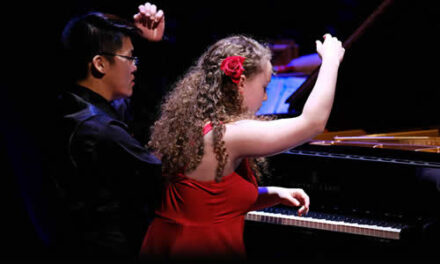Edenton Street United Methodist Church’s new pipe organ is a hearty endeavor to revive the American symphonic organ tradition in Raleigh. The inaugural recital by Ken Cowan triumphantly introduced this organ to a capacity audience.
Canada-based Orgues Létourneau Ltée built the new organ for Edenton Street United Methodist Church as their Opus 112. It utilizes 33 ranks from the church’s previous organ (Möller, Opus 9054), and most of the pipes occupy the original chambers on both sides of the divided chancel. One division (the Great or Grand-Orgue) is housed in new cases that are cantilevered over the choir stalls. The new organ’s 97 ranks (rows) of pipes adequately fill the space but do not command it, save for the three ranks of high-pressure reeds from the Solo division (Tubas). This is a vast improvement over the sound of the Möller, but the majority of the Létourneau organ’s pipework must labor around corners and beyond a chancel archway in order to reach most listeners. It is likely that the rear gallery divisions that have not yet been installed will help to lift the organ’s sound out into the room without relying on the Tubas.
Stylish playing, colorful registrations, and plenty of technical virtuosity marked the evening. Though not a showman, Ken Cowan displayed efficiency of movement and reverence to the music, yet not at all skimping on creativity. He excels in symphonic playing, particularly of 19th and 20th century repertoire, and his own transcriptions of orchestral scores are testimony to his skill and enthusiasm in this area. I might therefore forgive the performer for the few symphonic treatments in the opening work, J. S. Bach’s Toccata, Adagio, and Fugue in C, S. 564. The Fugue had swing and excellent rhythmic control, particularly at the devilishly difficult cadences. The Toccata could have used more elasticity and the Adagio subtler lyricism. I was grateful that Cowan’s registration enhancements remained tasteful. Registration changes for echoes might serve to showcase a new organ and sustain interest in the music, but excellent performances on organs well suited for Bach’s music do not require these.
The remainder of the program proved to be more successful overall for both the organ and performer. “Reverie” by William Grant Still conveyed mournful lyricism rooted in the American Spiritual, and the Létourneau served the music well. In Karg-Elert’s “Valse Mignonne,” Cowan demonstrated how the choice of composition, organ, and room can work as a team. One could forget entirely about the absence of reverberation and bloom, as the piece’s capriciousness captured some surprising sonorities more reminiscent of a cinema organ, which evidently inspired the composer to compose this piece. Cowan’s performance of Guilmant’s Sonata No. 1 was clean and confident. In particular, the second movement’s “chorale” section contrasting with the Flûte harmonique was the highlight of the entire sonata. I longed for greater flue and reed presence in the outer two movements. The Létourneau organ’s reed color in general better suits English and American organ music than it does French. The lone 8-foot Trompette rank in the Grand-Orgue doesn’t grab the listener in the nave the way Cavaillé-Coll harmonic chorus reeds do.
John Weaver’s Toccata, which opened the second half of the program, would have made a stronger opener to the entire recital than an obligatory, heady Bach work. This celebrated composer, teacher, and recitalist has helped to shape the current crop of young virtuosi like Cowan through his teaching at the Curtis Institute of Music in Philadelphia and the Juilliard School of Music in New York.
The Pastorale by Jean Roger-Ducasse is one of many such-named pieces modeled after Beethoven’s Pastoral Symphony, beginning and ending quietly but building up to a tempestuous middle section. The prevalent primary theme throughout the work makes one think of Franz Liszt’s treatment of themes in his symphonic poems, but even with Cowan’s skillful rendering, the work remains overrated and suffers more from a lack of organic flow and cohesion than from its long duration.
Cowan gave “Naïades” from Louis Vierne’s Pièces de Fantaisie one of the finest performances I’ve heard of this work. To say that he made the piece seem easy is an understatement. This hearing was sheer indulgence in amazing talent, creativity, and industry, and it ingeniously set the stage for the concluding work, Liszt’s “Mephisto Waltz No. 1.” Cowan’s transcription alone showed keen insight into the composer’s wishes; that Liszt himself revered the organ to such a high degree speaks worlds of his probable approval of Cowan’s efforts as transcriber. That he has technique and musicality to match the composer’s demands was never in dispute. It is difficult to imagine a more inspired transcriber and performer than Ken Cowan. The four standing ovations, including those after two encores, were well deserved.











